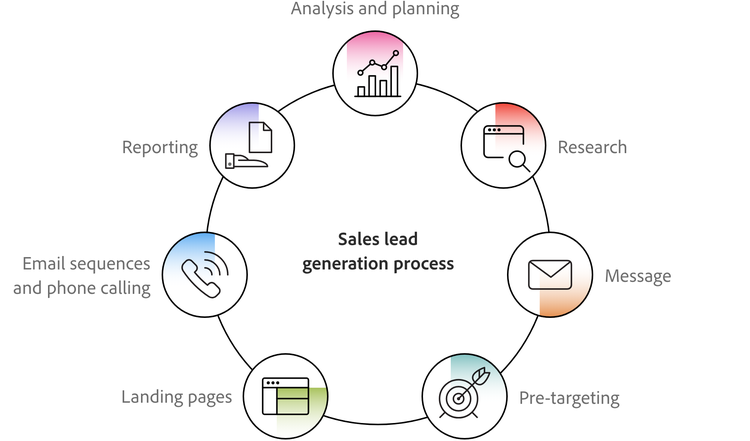Approach
In B2B marketing, an "approach" refers to the strategic and systematic method a company uses to reach, engage, and convert other businesses into customers or clients. It involves the set of actions, plans, and tactics designed to effectively communicate the value of products or services to businesses. Here are key components of the approach in B2B marketing.
Target Audience
Identifying and targeting specific businesses or industries as the primary customer base.
Relationship Building
Relationship building is a crucial aspect of B2B marketing. Establishing trust and fostering long-term partnerships are often more important than in B2C marketing.
Personalized Communication
B2B marketing often involves more personalized and targeted communication, as businesses typically have specific needs, and decision-makers may require detailed information.
Customization and Tailoring
B2B marketers often need to customize their offerings and marketing messages to meet the specific requirements and preferences of individual businesses.
Relationship Building
Establishing and nurturing long-term relationships with other businesses.
Metrics and Analytics
B2B marketing relies on metrics and analytics to measure the effectiveness of campaigns, track lead generation, and optimize strategies based on data-driven insights.


Email marketing
Developing a successful email marketing approach involves thoughtful planning and strategic execution. Here are key steps and considerations for an effective email marketing approach:
- Clearly outline the goals of your email marketing campaigns. Whether it's driving sales, increasing brand awareness, or nurturing leads, having clear objectives will guide your strategy.
- Develop and maintain a targeted email list by collecting opt-ins from interested individuals. Segment your list based on demographics, behaviors, or other relevant criteria to send more personalized messages.
- Use personalization to address recipients by their name and tailor content based on their preferences or past interactions. Personalized emails have higher engagement rates.
- Ensure that your emails are mobile-friendly, as a significant portion of users check their emails on mobile devices. Optimize the layout and design for smaller screens.

Analysis and planing
Analysis and planning are crucial components of any effective approach, whether it's in marketing, business strategy, or any other area. Here's how analysis and planning contribute to a successful approach:
Conduct thorough market research to understand the industry landscape, competition, and trends. Analyze market dynamics, customer behaviors, and emerging opportunities.
Gather and analyze customer feedback, preferences, and behaviors. Understanding your target audience enables you to tailor your approach to meet their needs and expectations.
Identify potential risks and uncertainties that could impact your approach. Assess the likelihood and potential impact of these risks, and develop mitigation strategies.
Evaluate the strengths, weaknesses, opportunities, and threats (SWOT) of your business or strategy. This analysis helps in understanding internal capabilities and external factors that could impact your approach.

Contact
Approaching B2B (Business-to-Business) businesses through contacts involves a strategic and relationship-focused method. Here's a step-by-step guide on how to effectively approach B2B businesses:
- Clearly define the characteristics of the businesses you want to target. Consider industry, size, location, and any other relevant criteria.
- Create a targeted contact list of key decision-makers within the identified businesses. This may include CEOs, CTOs, CFOs, or other relevant positions depending on your product or service.
- Clearly communicate the value your product or service brings to their business. Focus on solving a specific problem or addressing a need they might have.
Focus on building long-term relationships rather than immediate transactions. Regularly engage with your contacts, provide ongoing support, and stay connected even if they don't make an immediate purchase.
Approaching B2B businesses through contacts requires patience, a thoughtful approach, and a focus on building relationships. By providing value, personalizing your communication, and demonstrating a genuine interest in their success, you can increase the likelihood of establishing meaningful connections and ultimately securing business relationships.

